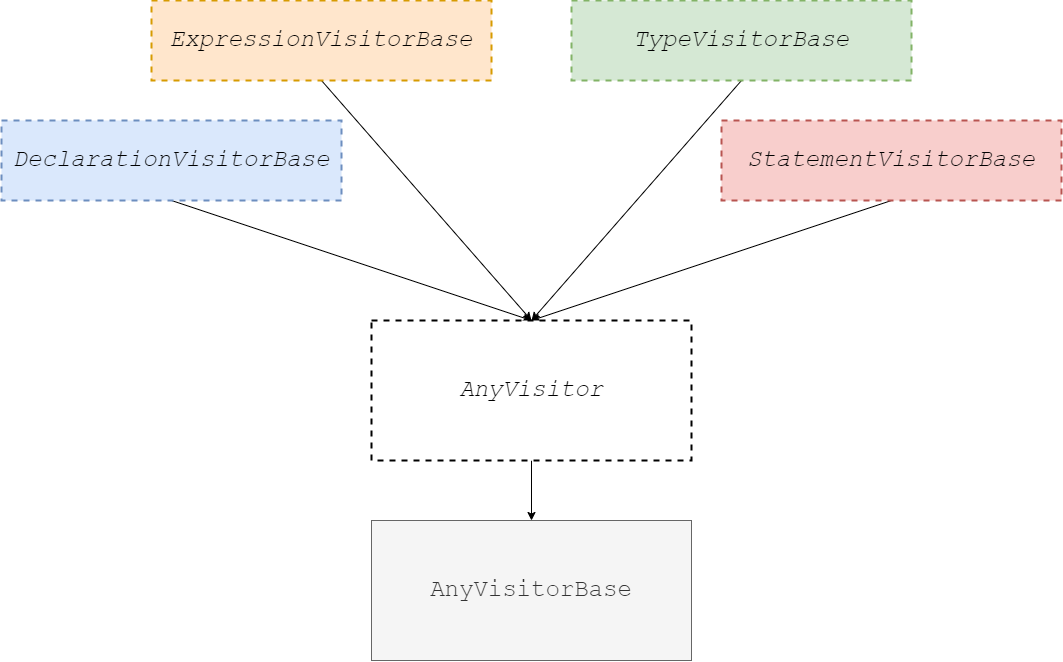Gallium AST
Gallium’s AST is a fairly simple class hierarchy.

The base Node interface provides access to source location info for each
node, and not much else.
The actual useful information is provided by the direct bases of Node.
Expressions, statements, and declarations have an enum class discriminator
that can be used for “RTTI.” They also provide equality,
visiting, and cloning.
Visitors
The visitor interface is relatively simple. A visitor type has to both
implement the interface of one of the user-facing visitors, and possibly
inherit from ValueVisitor<T> in some way to provide “returning” non-void
values from those visitors.
Each “category” of type (exprs, stmts, decls, types) provides two main types of visitors:
Const{Category}VisitorBase: Visited aconst T&of each node{Category}VisitorBase: Visited aT*of each node
This allows const-correctness where possible.
Each category also includes an alias, (Const)?{Category}Visitor<T> that
inherits from ValueVisitor<T> and provides the interface for returning
values.
The AST types themselves implement a protected virtual internal_accept
method that takes a mutable pointer to a “base” visitor.
Any visitors

There is also a pair of visitors that can visit any node, namely
ConstAnyVisitor and AnyVisitor (note the lack of Base). These inherit
from the correct visitor base class for each category, and simply expose
their APIs through public inheritance.
However, there is additional functionality in the Base variants of the
above two types: they provide “just visit all child nodes and do nothing.”
They provide an override for every visit method, and simply visit
all of the children of the nodes they visit.
In order to not throw away this functionality when a method is overridden,
they also provide a protected accept method that will visit whatever
node was passed in with the “just visit the children” behavior.
Note: This behavior couldn’t really be provided without the ability of any particular instance to be able to visit every child node without having to just copy the implementation multiple times